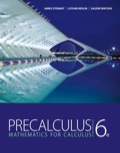
Concept explainers
a
To find the average rate of change of sales between 1993 and 2003.
a
Answer to Problem 27E
The average rate of change between 1993 and 2003 is
Explanation of Solution
Given information:
| Year | Cd player sold |
| 1993 | 512 |
| 1994 | 520 |
| 1995 | 413 |
| 1996 | 410 |
| 1997 | 468 |
| 1998 | 510 |
| 1999 | 590 |
| 2000 | 607 |
| 2001 | 732 |
| 2002 | 612 |
| 2003 | 584 |
Formula used:
The average rate of change of the function
Calculation:
Therefore the average rate of change between 1993 and 2003 is
Hence, the average rate of change between 1993 and 2003 is
b
To find the average rate of change of sales between 1993 and 1994.
b
Answer to Problem 27E
Theaverage rate of change between 1993 and 1994 is
Explanation of Solution
Given information:
| Year | Cd player sold |
| 1993 | 512 |
| 1994 | 520 |
| 1995 | 413 |
| 1996 | 410 |
| 1997 | 468 |
| 1998 | 510 |
| 1999 | 590 |
| 2000 | 607 |
| 2001 | 732 |
| 2002 | 612 |
| 2003 | 584 |
Formula used:
The average rate of change of the function
Calculation:
Therefore the average rate of change between 1993 and 1994 is
Hence, the average rate of change between 1993 and 1994 is
c
To find the average rate of change of sales between 1994 and 1996.
c
Answer to Problem 27E
The average rate of change between 1994 and 1996 is
Explanation of Solution
Given information:
| Year | Cd player sold |
| 1993 | 512 |
| 1994 | 520 |
| 1995 | 413 |
| 1996 | 410 |
| 1997 | 468 |
| 1998 | 510 |
| 1999 | 590 |
| 2000 | 607 |
| 2001 | 732 |
| 2002 | 612 |
| 2003 | 584 |
Formula used:
The average rate of change of the function
Calculation:
Therefore the average rate of change between 1994 and 1996 is
Hence, the average rate of change between 1994 and 1996 is
d
To find the two successive year in which CD player sales increase and decrease most quickly
d
Answer to Problem 27E
The most increase between two successive years is between 2000-2001.
The most decease between two successive years is between 2001-2002
Explanation of Solution
Given information:
| Year | Cd player sold |
| 1993 | 512 |
| 1994 | 520 |
| 1995 | 413 |
| 1996 | 410 |
| 1997 | 468 |
| 1998 | 510 |
| 1999 | 590 |
| 2000 | 607 |
| 2001 | 732 |
| 2002 | 612 |
| 2003 | 584 |
Formula used:
The average rate of change of the function
Calculation:
Therefore the average rate of change between 1994 and 1995 is
The average rate of change between 1995 and 1996 is
The average rate of change between 1996 and 1997 is
The average rate of change between 1997 and 1998 is
The average rate of change between 1998 and 1999 is
The average rate of change between 1999 and 2000 is
The average rate of change between 2000 and 2001 is
The average rate of change between 2001 and 2002 is
Therefore the average rate of change between 2002 and 2003 is
Hence,the most increase between two successive years is between 2000-2001 and
the most decease between two successive years is between 2001-2002
Chapter 2 Solutions
EBK PRECALCULUS: MATHEMATICS FOR CALCUL
- Use the two methods "real number solution space basis" and "complex solution space basis" respectively to solve y''+ 1/4y = 0, y(π) = 1, y'(π) = -1arrow_forwardExplain the key points of Theroem 9.3.6arrow_forwardProve that if a and b are both positive, then y(x)⭢0 as x⭢∞ for all sloutions y of the questionarrow_forward
- Show how to use "Change of Variables Formula for Integrals" to solve "Separable Differential Equations"arrow_forwardUse the two methods "real number solution space basis" and "complex solution space basis" respectively to solve y''+ 4y' + 4y = 0, y(-1) = 2, y'(-1) = 1arrow_forwardExplain the key points of Theroem 9.3.6arrow_forward
- Use the two methods "real number solution space basis" and "complex solution space basis" respectively to solve y''+ 4y' + 4y = 0, y(-1) = 2, y'(-1) = 1arrow_forwardShow how to use "Change of Variables Formula for Integrals" to solve "Separable Differential Equations"arrow_forwardA helicopter pilot needs to travel to a regional airport 25 miles away. She flies at an actual heading of N16.26°E with an airspeed of 110 mph, and there is a wind blowing directly east at 20 mph. (a) Determine the compass heading that the pilot needs to reach her destination. (b) How long will it take her to reach her destination?arrow_forward
 Calculus: Early TranscendentalsCalculusISBN:9781285741550Author:James StewartPublisher:Cengage Learning
Calculus: Early TranscendentalsCalculusISBN:9781285741550Author:James StewartPublisher:Cengage Learning Thomas' Calculus (14th Edition)CalculusISBN:9780134438986Author:Joel R. Hass, Christopher E. Heil, Maurice D. WeirPublisher:PEARSON
Thomas' Calculus (14th Edition)CalculusISBN:9780134438986Author:Joel R. Hass, Christopher E. Heil, Maurice D. WeirPublisher:PEARSON Calculus: Early Transcendentals (3rd Edition)CalculusISBN:9780134763644Author:William L. Briggs, Lyle Cochran, Bernard Gillett, Eric SchulzPublisher:PEARSON
Calculus: Early Transcendentals (3rd Edition)CalculusISBN:9780134763644Author:William L. Briggs, Lyle Cochran, Bernard Gillett, Eric SchulzPublisher:PEARSON Calculus: Early TranscendentalsCalculusISBN:9781319050740Author:Jon Rogawski, Colin Adams, Robert FranzosaPublisher:W. H. Freeman
Calculus: Early TranscendentalsCalculusISBN:9781319050740Author:Jon Rogawski, Colin Adams, Robert FranzosaPublisher:W. H. Freeman
 Calculus: Early Transcendental FunctionsCalculusISBN:9781337552516Author:Ron Larson, Bruce H. EdwardsPublisher:Cengage Learning
Calculus: Early Transcendental FunctionsCalculusISBN:9781337552516Author:Ron Larson, Bruce H. EdwardsPublisher:Cengage Learning





